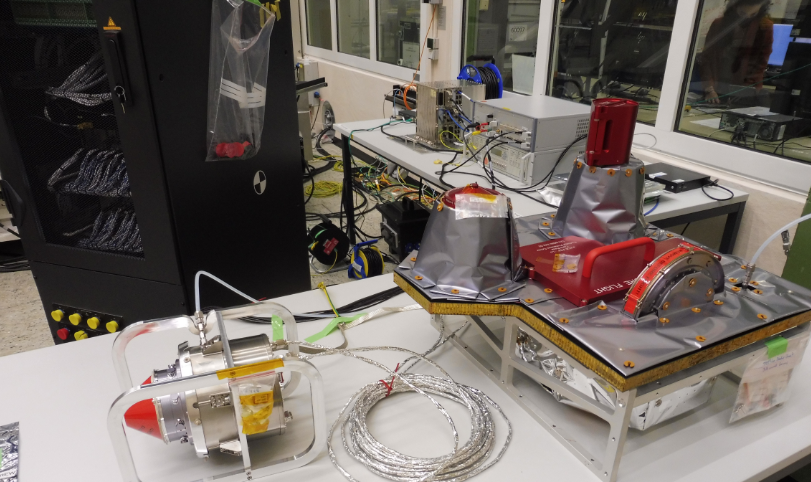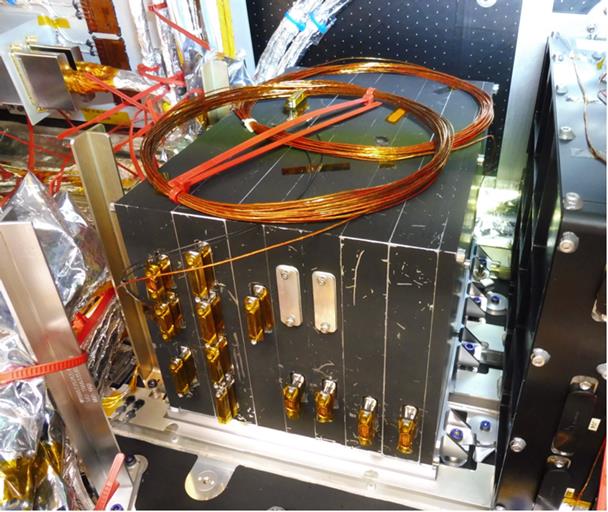PEP consortium delivers flight models of the first four particle detectors of the JUICE probe to Jupiter
After 8 years of development, the PEP consortium, which includes IRAP (CNRS, Université Paul Sabatier de Toulouse and CNES) (1), has just delivered to Airbus the flight models of the first four charged and neutral particle detectors (JDC, JEI, JNA, and NIM) that make up one of the two units (PEP-Lo) of the suite of the same name for the European Space Agency’s JUICE (2) mission. These flight models will now be integrated on the satellite in Friedrichshafen, Germany. The launch to Jupiter is scheduled for 2022.
The PEP experiment (Particle Environment Package, PI: IRF Kiruna, Sweden) is a particle and plasma measuring instrument that includes 6 sensors divided into two units, PEP-Lo and PEP-High :
- an ion mass spectrometer (JDC), an electron spectrometer (JEI),
- an electron spectrometer (JEI),
- a Low Energy Neutral Neutral Atoms (LEN) imager,
- a Neutral Energetic Atoms and Energetic Ions Imager (JENI),
- an energetic electron detector (JoEE),
- and a Neutral Ion Mass Spectrometer (NIM).

Already at the beginning of October, IRF Uppsala successfully delivered the flight model of the radio/wave instrument to ADS-Friedrichshafen to which IRAP contributed scientifically (3).

Notes
(1) IRAP contributes to both the PEP-Lo unit (at JDC, supply of the scanning high-voltages for the IRF Kiruna, Sweden) and to PEP-High (JENI, supply and characterization of the microchannel wafer type detectors for the APL Johns Hopkins University USA, flight models from JENI and JoEE delivered to ADS-Friedrichshafen in December 2020).
(2) The JUICE mission (JUpiter ICy moons Explorer) is the first class L mission of the Cosmic Vision program of the European Space Agency, selected in May 2012. This mission will be launched in 2022 by Ariane 5 from the Guiana Space Center in Kourou, French Guiana, for arrival at Jupiter in 2030. The spacecraft will navigate in the Jupiter system, flying several times over the Galilean moons Europe, Ganymede and Callisto, before entering orbit around Ganymede, the largest moon in the Solar System.
(3) IRAP also contributes to the development of the ground segment (with CDPP) of the instrument for the RPWI consortium (PI: IRF Uppsala, Sweden). The RPWI instrument (Radio and Plasma Waves Instrument) consists of several receivers connected to electrical and magnetic sensors covering the low frequency part of the spectrum (a few Hz to 45 MHz). The French laboratories involved in the RPWI instrument are LESIA, LPP, LPC2E, LATMOS and IRAP.
IRAP Contact
- Nicolas André, nicolas.andre@irap.omp.eu






